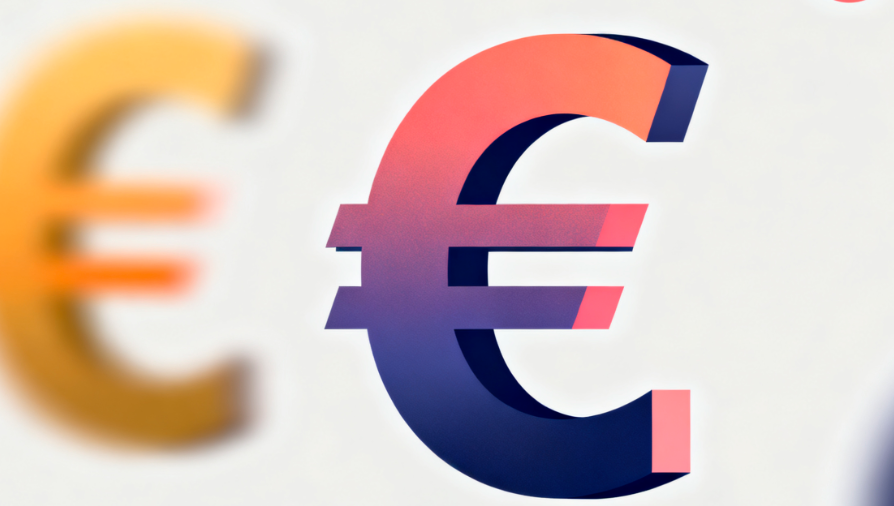
There is no doubt that the NFT market has entered a prolonged adjustment period after a brief boom. As speculative fervor subsides, numerous projects have stalled or been eliminated by the market. The once-dominant NFT trading giant OpenSea has shifted from "unicorn" to "survival mode," with its once tens of billions valuation significantly shrinking amid industry pains.
Facing stagnant business growth and profit anxiety, OpenSea is actively seeking transformation. It is not only attempting to become an omnichain integrated trading platform but also trying to re-attract users and liquidity through airdrop incentives.
Token Trading Surpasses NFTs, Significant Contribution from Existing Users
OpenSea's business focus is rapidly shifting from traditional NFT trading to token trading.
According to data from Dune, OpenSea's trading volume remained low until April of this year, sustaining only a daily scale of several million dollars, with the market focus still centered on traditional NFT trading. However, since mid-September, a significant inflection point appeared in the platform's trading structure. Token trading volume rapidly climbed and surpassed NFT volume for the first time, subsequently widening the gap and becoming the platform's new growth engine. Particularly on October 15, OpenSea's token trading volume reached $474 million, setting a historical record, while that day's NFT trading volume was only $13.747 million, accounting for less than 2.9%, showing a significant disparity.
As of now, OpenSea's cumulative token trading volume for this year has reached $3.55 billion, with the past 30 days contributing $3.03 billion, approximately 85.4% of the annual total. These transactions primarily come from the Base, Arbitrum, and Ethereum chains, with Base contributing particularly prominently. Taking October 16 as an example, the platform's total trading volume exceeded $470 million, with Base alone contributing 58.2%.
The surge in token trading has directly driven changes in OpenSea's revenue structure. Data tracking from Dune shows that revenue from token trading in the past 30 days was approximately $25.5 million, accounting for 56.8% of OpenSea's total revenue this year ($44.9 million).
In contrast, the overall trading volume of the NFT market this year is only $1.82 billion, less than half of the token trading volume; its revenue in the past 30 days was about $5.57 million, far lower than the token sector. Looking at NFT trading on October 15, it was mainly distributed on Ethereum, Base, and Hyper EVM.
It is worth noting that the significant increase in OpenSea's trading activity is not driven by new users but by the high-frequency operations of existing users. Since the second half of 2025, the number of active addresses on the platform began to rise significantly, and the proportion of repeat users among them has remained high. Taking October 13 as an example, the number of active addresses on the platform reached 276,000 that day, of which 94.2% were repeat users, meaning that OpenSea's trading volume growth relies more on the re-participation and high-frequency interaction of existing users rather than the expansion of new users.
Simply put, OpenSea's short-term explosive power stems from the high-frequency liquidity of the token trading market and the deep participation of existing users.
Aiming to Build an Omnichain Integrated Application, Using Airdrop Incentives to Accelerate Transformation
In July of this year, OpenSea announced it would build an omnichain integrated application, combining NFTs, tokens, and DeFi functions into one, aiming to provide users with a全新的使用體驗 (brand new user experience). The launch of this strategic layout began months earlier.
In February 2025, OpenSea fully initiated its transformation, launching the public beta of its new platform, OS2. OS2 is a completely rebuilt product, featuring not only a new interface and search functions but also modes for collectors and professional users. Beyond traditional NFT trading, the platform also supports token swaps and native cross-chain purchases, supports multiple blockchains, and enhances user participation through diversified incentive mechanisms.
Simultaneously, OpenSea announced a token issuance plan to reward long-term supporters and OG users and promote sustainable development. As officially explained at the time, "The NFT bull market changed us, made us too corporate, too Web2, risk-averse, and neglected the original intention of building for users." This long-awaited news by users reignited market attention. After all, during the NFT bull market, competitor Blur absorbed a significant market share from OpenSea through its token issuance, making the market anticipate OpenSea's own token.
To promote the token trading business, OpenSea is making efforts both in product and technology. The platform integrated multiple blockchains like Solana, HyperEVM, Base, Polygon, Arbitrum, Sei, and deeply cooperated with applications like Uniswap, MetaMask, Meteora, and Coinbase Wallet to optimize the cross-chain trading experience. Concurrently, OpenSea acquired Rally Company, incorporating its mobile-first Web3 application and Rally wallet, which supports token trading across 19 blockchains. The newly launched mobile application natively integrates the AI tool "OpenSea Intelligence," enabling real-time cross-chain portfolio analysis and one-stop trading, providing users with intelligent asset management and trading experiences.
In terms of activating user traffic, OpenSea actively capitalizes on market hotspots. For instance, the platform listed relevant tokens leveraging the NFTStrategy trend and injected 20 ETH into the reward pool to incentivize trading activity. The airdrop incentive program is an even more critical driving factor. Last month, OpenSea announced that pre-TGE rewards were entering the final stage and launched a "Treasure Chest" event. Users can earn rewards by upgrading chests through cross-chain trades, daily tasks, and collecting supplies. The platform allocates 50% of fees to user incentives. After the event launched, the cumulative trading volume exceeded $2 billion. Currently, Wave 1 has ended, and token and NFT rewards with a total value of $12.2 million are about to be distributed; Wave 2 started on October 15 and runs until November 15, with an initial prize pool including OP, SOMI, and ETH tokens worth $1 million. Thus, the growth in OpenSea's trading activity is closely related to airdrops and reward mechanisms.
According to recent revelations from OpenSea, the platform plans to launch the SEA token in Q1 2026. 50% of the total supply will be allocated to the community, with initial claims taking up half of that. Users participating in the OpenSea Rewards program and OG users will be key considerations. Meanwhile, as previously disclosed by officials, it is evaluating historical usage data and trading volumes of users from different years and will combine user profiles to develop more precise incentive strategies.
After the launch of the SEA token, OpenSea will also provide users with more utilization methods, including a staking feature allowing users to stake SEA behind their favorite tokens and collections. Additionally, 50% of SEA's revenue will be used at launch to buy back SEA, aiming to ensure the token's value and the ecosystem's healthy development.
Of course, OpenSea is also continuing to advance its NFT business during this period, including launching the NFT reserve plan "OpenSea Flagship Collection," planning to invest over $1 million to acquire historical and emerging NFTs to activate the NFT market and enrich the platform ecosystem.
In summary, before OpenSea's airdrop plan is fully implemented, its market activity will continue to be driven by incentive mechanisms in the short term.
















